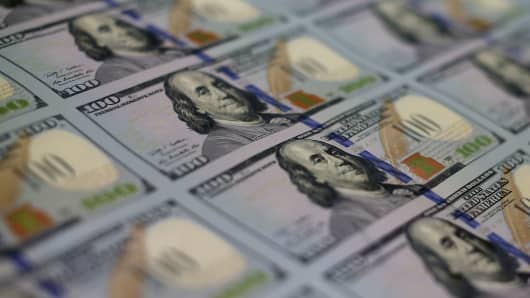Data this week showed a rebound in U.S. manufacturing and a rise in factory orders, suggesting the sector was stabilizing. .
(Read More: US Manufacturing Expands, Construction Spending Up)
"The dollar has also been supported by the contrast in monetary policy between the Fed and the other major central banks. The U.S. is moving to a less dovish direction, while the other central banks are staying dovish or becoming even more dovish," Serebriakov added.
In afternoon New York trade, the dollar last traded up nearly 1 percent to 100.59 yen after hitting a peak of 100.72, the highest since June 3.
The U.S. nonfarm payrolls report was the key focus of the market, with investors expecting creation of 165,000 jobs in June and a lower unemployment rate at 7.5 percent.
Investors have been buying dollars ahead of Friday's data after the Fed at its June 19 policy meeting lowered its unemployment rate forecast for 2014 to 6.5 percent.
"A drop in the unemployment rate would confirm that the U.S. economy is moving in the right direction and the Fed is on course to reduce asset purchases in September," said Kathy Lien, managing director at BK Asset Management in New York.
The dollar index was last at 83.54, up 0.6 percent, after peaking at 83.61, its highest since May 31.
U.S. financial markets will close early on Wednesday and remain closed on Thursday in observance of the U.S. Independence Day holiday. Lower volume could spark greater volatility, especially with the release of Friday's jobs data.
Foreign exchange options are looking at ranges 2.5 times a "normal" day for Friday's range on euro/dollar and three times a "normal" day for the dollar/yen, according to Alan Ruskin, head of foreign exchange strategy at Deutsche Bank in New York. "Normal" refers to the range that is expected for days where there are no special events.
"Even given risks of holiday-induced reduced liquidity, this looks way too high, notably on euro/dollar, given Fed Chairman Bernanke has already let the tapering cat out the bag, and the data may vary the timing of the start to tapering by a single FOMC meeting, but probably not more," Ruskin said.
Meanwhile, the Australian dollar fell 1 percent to US$0.9145, not far from Monday's three-year low of US$0.9110, after the Reserve Bank of Australia kept the door open to rate cuts, in part due to a still-high currency.
The Canadian dollar also stayed on the defensive, with the greenback hitting a 21-month high of C$1.06. The U.S. dollar was last at C$1.0544, up 0.5 percent.




